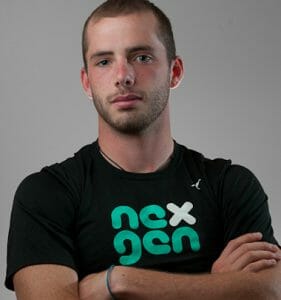January 24, 2013 by Charlie Enders in Analysis with 7 comments
 What do Luther, Middlebury, Colorado College, and Whitman all have in common? All are Division-III schools that have recently made it to Division-I Nationals. But how did these teams get to that point? How does a D3 school break the mold and start competing (and winning) against the big boys of D1? How does a DIII team become a “tier jumper?”
What do Luther, Middlebury, Colorado College, and Whitman all have in common? All are Division-III schools that have recently made it to Division-I Nationals. But how did these teams get to that point? How does a D3 school break the mold and start competing (and winning) against the big boys of D1? How does a DIII team become a “tier jumper?”
A note: before I start analyzing what it takes to become a tier jumper, I need to bring up Carleton. Carleton is a bit of an exception to the rule. Carleton receives a steady influx of Seattle-based talent — freshman who are consistently among the best in the country. This is why Carleton not only competes with the best D1 teams in the country, but BEATS them. If ESPN or Rivals analyzed Ultimate, Carleton’s would have a top-five recruiting class every year.
First, we need to understand the differences between a typical higher-level D3 school and D1 school. Let’s compare two college programs I’m fairly familiar with: Saint John’s* (D3) and Minnesota (D1), both annual Nationals qualifiers (for their respective divisions).
Saint John’s has no coach and no B-team. Incoming freshman with prior ultimate experience are few and far-between. Most of the fall at SJU is dedicated to teaching the game to the new players. No cuts are made; if you show up, you’re on the team.
Minnesota Greyduck, on the other hand, has a well-known coach and a B-team. If you’ve never played ultimate before, the chances of making the A-team your freshman year are slim to none.
Why these huge differences? Simply put, size matters. Saint John’s has around 2,000 students (all male), while Minnesota has thirty-two thousand (approx. half are male) undergraduates alone. A larger pool of potential players will, all else held equal, yield a larger pool of players with experience (again, Carleton is the exception). That is, of course, why USA Ultimate created Division III — smaller schools start with an immediate disadvantage.
So how do some small schools break through to Division-I Nationals? To start, they each have a “franchise” player. Every breakout DIII team has one or more players who are talked about as among the best in country. Luther’s Eric Johnson is an obvious one. He finished second to Nick Lance in Callahan voting in 2012, and helped Luther qualify for its second consecutive Nationals appearance.
Whitman (Jacob Janin/Jeremy Norden), Middlebury (Peter Prial), and Colorado College (Nicky Spiva) all had similar “franchise” players, players who over the course of their four years were not only the best players on their teams but were leaders in shaping the growth of their respective programs. For an incoming freshman who is on the fence between one of these schools and a non-elite ultimate school, the visibility these guys have brought to their teams certainly doesn’t hurt when it comes to making the decision.
So apart from hoping that an elite club player comes waltzing into practice one day, what can a regular D3 team do? They can hope an extremely talented freshman class will come eventually. Or, like most D3 and many D1 teams, they can work with what they get. They can teach that kinda-hefty-kid not to double cut and show that freakishly-tall-but-slow-kid how to throw a forehand. Building a program is just as important as having great talent.